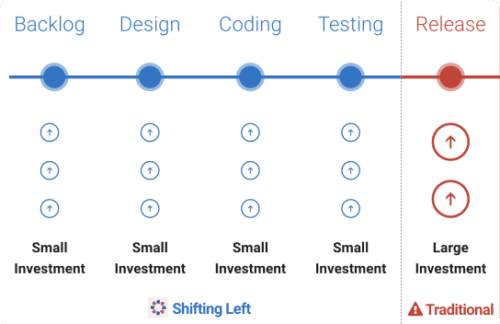Section 508 website compliance
Section 508 web compliance means making sure your government Information and Communication Technology (ICT) can be used by people with disabilities and the assistive technology they use. Get started!
What are the guidelines? How can I tell if my website or app is Section 508 compliant?
According to the Section 508 standards, all electronic content needs to conform to the Web Content Accessibility Guidelines (WCAG) 2.0 Level A and AA. This isn’t a recommendation, like with the ADA, but a legal requirement.
There are 38 Success Criteria when Level A and Level AA requirements are combined. Non-web docs and non-web software only need to satisfy 34 of the 38.
Section 508 explicitly requires that agencies determine in advance:
- How users with disabilities will perform the functions associated with the ICT.
- How the ICT will be developed, installed, configured, and maintained to support users with disabilities.
For context, WCAG 2.0 was designed and finalized in 2008. Our friends in Europe are currently following WCAG 2.1 by law, which was finalized in 2018.
What is a VPAT, and do I need one?
First, let’s start with a basic definition. A Voluntary Product Accessibility Template (VPAT) is a resource for documenting the health of your website or digital property. Think of it as the nutrition label on the back of your favorite snack. The template was initially created so that government agencies could track and document their Section 508 digital accessibility compliance and progress.
| Chapter 3: Functional Performance Criteria | This Section 508 chapter is less technical than the other WCAG requirements and provides a more human-focused perspective. When evaluating your product or service, you’ll want to check if the thing you’re testing can be used… • 302.1 Without Vision • 302.2 With Limited Vision • 302.3 Without Perception of Color • 302.4 Without Hearing • 302.5 With Limited Hearing • 302.6 Without Speech • 302.7 With Limited Manipulation • 302.8 With Limited Reach & Strength • 302.9 With Limited Language, Cognitive, and Learning Abilities |
| Chapter 4: Hardware | This chapter covers requirements for hardware, including ICT with closed functionality. This means it should be operable without requiring the user to attach or install assistive technology to make it work. • Closed Functionality • Speech-output enabled • Volume • Display screens • Color coding • Audible signals • Closed captions |
| Chapter 5: Software | This chapter focuses on accessibility for apps, authoring tools, and other operating programs and software. Pay special attention to the important requirements under Authoring Tools for preserving accessibility on export as well as providing accessible templates and prompts. • Interoperability with Assistive Technology • Applications • Authoring Tools |
| Chapter 6: Support documentation and services | This chapter is mostly covered by WCAG already, but this is an important reminder to make sure your help desk, documentation, and FAQs are readily accessible. • Accessible Support Services • Electronic Support Documentation |
How is Section 508 compliance enforced?
The short answer: It is enforced through ICT procurement by the federal government, lawsuits and legal complaints, and US Department of Justice consent decrees.
Historically, 508 was mostly enforced through ICT procurement by .gov. However, the U.S. Department of Justice has proactively issued consent decrees, including:
- Rite Aid
- Hy-Vee
- Kroger
- Meijer
- CVS
ICT procurement in government is still a major enforcement opportunity. Part of Section 508 is primarily focused on procurement and is implemented within the Federal Acquisition Regulations—referred to as FAR.
One of the primary strategies in Section 508 is to affect the purchasing habits of the federal government, which has a hefty ICT budget. If we can get them to invest in accessibility technology, this will have a trickle-down effect on other businesses.
The US government is the single largest purchaser of ICT in the world. Section 508 drives the ICT industry!
How can I take meaningful steps to meet 508 compliance requirements?
If you’re visiting this page, you’re already taking proactive steps to reach 508 accessibility conformance. Nice job! Wondering what to do next? You can start by…
- Updating your agency’s accessibility and conformance policies to reflect the 508 Refresh.
- Ensuring your employees and testers are sufficiently trained by experts.
- Determining if your website, mobile apps, and documents are accessible.
- Update your procurement language in your contracts.
- If you aren’t already, start using an automated tool to regularly test your website.
Develop a plan to monitor and measure accessibility success.

Adopt a “shift left” testing and development approach
Practicing digital accessibility earlier in the development lifecycle and making accessibility a permanent, sustainable part of your workflow will save the team time, energy, and disruption.
By testing earlier and often, your team will squash bugs before they turn into costly lawsuits.

Why do I need to comply with Section 508?
It’s important to be proactive about accessibility and compliance since drive-by demands and lawsuits have been on the rise for federal agencies and institutions—even during the pandemic.
Lawsuit: Department of Homeland Security
In 2013, Michael Leiterman, a lawyer for the Department of Homeland Security (DHS), filed a suit against his employer for not providing accessible technology access so he could properly do his job. In this case, they reached a settlement of $550,000!
Beyond viewing accessibility from a compliance point of view, it is important to remember accessibility improves democracy. Your users with disabilities want (and need) accessible ICT. An accessible and inclusive design approach makes for a better citizen experience, including making information accessible to all constituents.
Federal employee
- Have our employees been appropriately trained? Do we have Section 508 Refresh SMEs
- Do we procure and develop accessible technology?
- How can we measure and monitor our progress?
EDU employees
What are the accessibility requirements under the ADA?
Contractors
- Do we need a new VPAT?
- Is our VPAT readily available? Is it posted on our website?
- Is our help desk personnel prepared to assist with accessibility?
Developers
- Are we planning for accessibility in the beginning?
- Who are the Trusted Testers?
How Deque can help
Free consultation
Not sure where to start? Request a free consultation to get expert guidance.
Audit
Most accessibility projects begin and end with an audit – they assess the current state of your site or application’s accessibility resulting in a clear accessibility report.
Remediation
Getting help from our team of experts will ensure your accessibility fixes will meet your compliance requirements as quickly and effectively as possible.
Axe testing tools
The axe DevTools, axe Auditor and axe Monitor products enable accessibility experts and development to test and maintain accessibility end-to-end.